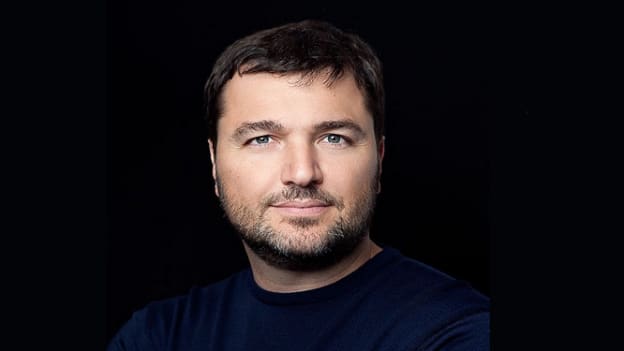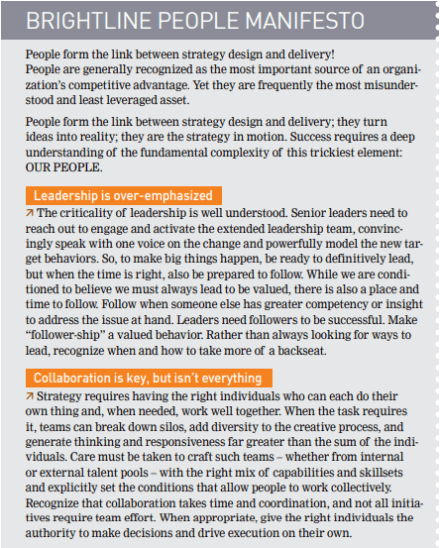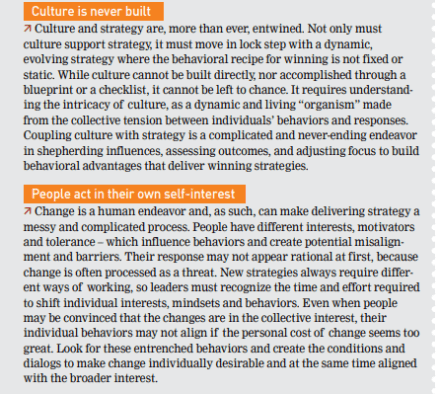Brightline Initiative's Ricardo shows the road to transforming the future

Over the past 20 years, Ricardo Viana Vargas has been responsible for more than 80 major transformation projects in several countries and industries, covering an investment portfolio of over 20 billion USD. He is also an entrepreneur in the digital economy, with a focus on project management tools using artificial intelligence and machine learning.
He is currently the Executive Director of the Brightline Initiative™, a coalition of leading global organizations from business, government and not for profit sectors, including the Boston Consulting Group (BCG), the Project Management Institute (PMI) and the Agile Alliance. He is the first Latin American to be elected Chairman of the Project Management Institute (PMI) and has written fifteen books and a dozen of technical articles.
In an exclusive interaction with People Matters, Ricardo talks about the crucial role of project management in organizations, about Brightline Initiative’s People Manifesto and why it should not be about thinking how the future would be, but about transforming it.
You are a multi-faceted personality. You began as an engineer and then shifted towards project management, entrepreneurship and the initiative of Brightline. Please take us through your journey.
I am a Brazilian and was raised in an environment which demanded working with a mindset to rely more on my ability than someone else taking my hand and guiding me throughout my whole life. Since I was fourteen, I developed a true passion for Chemistry, labs and technology and I started working at a very young age in my own neighborhood by selling perfumes which marked my first experience as a Chemical Engineer. Then I shifted my interest to the transformation industry to understand things like how people create plastic, petrol and transformed it into gasoline for airplanes. It was my engineering class that helped me build an extremely strong background in Mathematics, Physics, Chemistry and Industrial Engineering. I studied about how to create transformation from raw materials and other products, how to optimize them to make products faster and this is what opened my eyes to project management.
When did you begin to pursue this idea of project management?
It was when I was 21 years old and I could bring PMI to my state for the first time. I became the first Latin American member to be elected to the PMI Board of Directors and was made the Chairman in 2009. Everything was based on this passion of transforming raw ideas into results. Over the past 15 years, I have had the chance to write about fifteen books and dozens of technical articles and I established a company in Brazil which became very big and I sold it in 2006 with 4500 employees. I then took my career international and became the global Director for Project Management at the United Nations between 2012 and 2016. This was a very important phase for me as it gave me the chance to use my skills and knowledge for the humanitarian and development purpose, something that was not about making my clients wealthier. Hence, what inspired me the most to get into project management was the fact that I love getting things done. I am not the kind of person who stays only in the ideas environment. It is not about thinking about how the future would be, but transforming the future. This mindset was extremely helpful for me at the UN, since I was the one heading the implementation of projects and getting the job done on the ground. For example, we built 4000 kms of roads in Afghanistan and hundreds of schools and hospitals in challenging environments and conflict zones. The project execution part was what motivated me the most.
How did the opportunity emerge to initiate Brightline which is closely associated with project management?
As individuals, we all need to develop the flexibility to adapt to different opportunities that may arise. I knew since the beginning that my work at the UN was not a change in my professional life; it was more like a project. When I brought this project at the UN into fruition, PMI reached out to me along with BCG and Agile Alliance with a new and unique idea. The idea was to convene the message to people on the importance and know-how of getting things done. So, in this way, the ‘embryo’ of Brightline was formed, with a mission of creating a space to transform ideas into result, in a world that demands much more improvement.
So, why can some companies deliver and some cannot? Is it a financial problem or is it a technology or human problem? What is blocking organizations to be successful in delivering their strategies and ideas? At Brightline, we develop research and raise awareness around these issues. If people do not have the awareness that there is a problem to solve in terms of transforming their strategies and ideas into results, then they will not act on it. And Brightline is an initiative for raising the awareness and build ways to tackle the problem. Within a year, we successfully conduct an online training course on Coursera for free with almost 3300 students enrolled at the moment. We organized the Strategy@Work conference in New York this October, which is an exclusive invite-only event with CEOs, strategy executives and thought leaders sharing their experiences on how to better link their strategy design with strategy delivery in this volatile world we all live in. We have been producing multiple research pieces as well with global leading organizations on topics such as strategy implementation, crisis management, people, etc. In one year, we accomplished things that many could not do in 20 years. At Brightline, we have a startup mindset and we work in an extremely nimble and agile environment with headquarters in Philadelphia and team members all over the world. Moreover, everything we produce is available for free for the public. Brightline is about a mission on bridging the gap between ideas and results; this is beyond business, which excites me and motivates me to transform things.
What are some of the fundamental guidelines and principles that you can share with us on the basis of your experience with great leaders or role models on the execution of ideas? What are some of the gaps that you have seen between idea and execution?
About one year ago, we created the Brightline Initiative 10 Guiding Principles, a creative comment document consisting of 10 guiding principles that is the cornerstone of Brightline’s work. I would like to metaphorically represent the guiding principles as a connector like a river or a bridge linking two mountains symbolizing idea and execution respectively. We identify that it is important to create awareness among people that equal value should be attributed to both ideas and execution.
For example, the first principle is that we need to acknowledge strategy delivery is as important as strategy design. In other words, ideas without execution is nothing. Second is the principle on accountability especially accountability on the ones that design the strategies. The accountability demands right resources, an in-depth understanding of the market and steps to translate strategic initiatives into favorable results. All of the 10 principles have a human component in them and the challenge lies where people cannot transform and adapt in the speed of the technologies and they cannot follow Moore’s Law. That is, people are not able to change as fast with the environment. This brings up the significance of the People Manifesto we just launched, which acts as a bridge between people and change.
In the People Manifesto, you have highlighted leadership, collaboration, culture and self-interest. What do you suggest as the most important one among them?
The People Manifesto is designed to provoke people’s thinking on the most fundamental and complex element in strategy—THE PEOPLE. It highlights four areas that have been discussed a lot but need to be revisited and better understood. As the People Manifesto highlights, people are generally recognized as the most important source of an organization’s competitive advantage. Yet they are frequently the most misunderstood and least leveraged assets.
The four areas of the People Manifesto are all super relevant, for example, leadership is overemphasized, culture is never built, collaboration is key but isn’t everything, etc. The one that is the most evident one for me is that people act on their own self-interest. If people do not buy the idea, they don’t act on it. People are much more complex and if they fail to identify what is in it there for them and even if they don’t acknowledge their work, they do it in their own self-interest. If an organization does not understand the interest of its people, then people do not buy in to the idea and transform. We can see a lot of people who say they don’t understand where their company is moving towards; it is actually a polite way of saying that they don’t agree with this strategy.


What is the role that HR professionals need to play in the present scenario which demands more agility as projects are a lot more dynamic today? How can HR create an organizational structure with the right culture and agility for the execution of principles?
First, we need to reinvent how we handle the team and people. We need to give people the autonomy, foster their self-development and go out of their comfort zones. It takes a lot of trust and also the courage to do. But without doing so, it will lead to failure when a company keeps protecting its employees like keeping them in a golden cage that is so comfortable. It will prevent them from adapting to the fast-changing environment outside of the golden cage. In the Brightline Strategy@Work conference in October, former Chairman and CEO of IBM, Mr. Gerstner spoke about the sense of urgency for leaders to act in this fast-changing world. I think the sense of urgency is definitely key here. It demands HR professionals and leaders in the organizations to create the change and culture that every single person should know his/her individual responsibility and work on individual self-development. Also, people should not be scared to make career moves. HR needs to foster such environment and mindset of flexibility in the workplace where employees can have access to knowledge and access to opportunities.
What is your point of view on the role of technology in the world of work?
With regards to technology, what we need to do is channel technology and use machine learning to improve human capability of doing things. However, if we do not bring people together first and are not inclusive, technology will benefit only a fraction of the society, and this at some point, might collapse the society.
If we can create opportunities for everybody to succeed at different levels, we are improving the society in general and this is what we should aim with the advancement of technology.
We are not meant to support technology that just enables people to kill jobs; it should rather generate new opportunities for people. People should not feel excluded. So, if we want to create a good society, technology should be applied in the right way.
How do strategic leaders need to do things differently for the future of work?
In my opinion, if you are to be a leader, you have to do what you say instead of preaching and practicing different things. You need to walk the talk. You need to lead the organization by being a true example or as a role model who can understand and adapt with the environmental changes happening around you. I strive to do that myself. When I graduated in Chemical Engineering, my parents believed that I should pursue my career in a large oil company, start as an intern and finish my career 35 years later as the top management. But today different approaches are getting approved and the new workforce demands different working experiences in diverse geographical regions. I know 80 different countries as well as different perspectives from Japan to the Gaza Strip. This is what the leaders should foster - to have a global view of what’s happening and be able to adapt to the changing environment.
Is there anything else you would like to suggest to the HR community and to leaders?
I would like to invite everyone to take a look at the Brightline People Manifesto and think and connect with the wisdom in the People Manifesto. As an HR professional, everything that seems to be obvious needs to be challenged because people are constantly evolving. This is what we attempt to do with the People Manifesto when we say that we have to overcome this leadership overemphasizing. The extreme sense of leadership would curtail our ability to follow which is highly required to have a wider experience. HR needs to foster this mindset for creating a productive work culture.
















